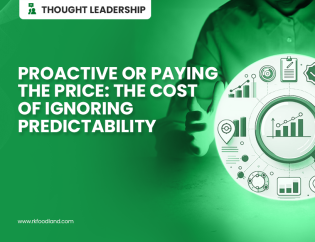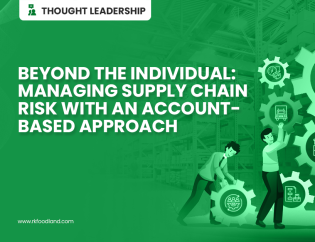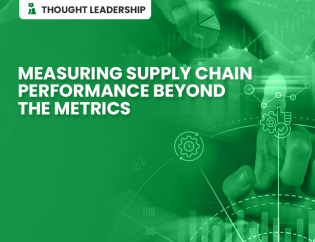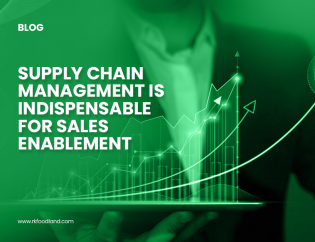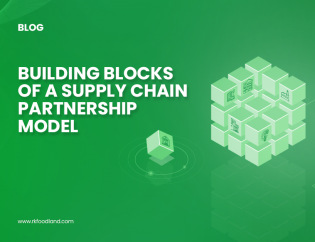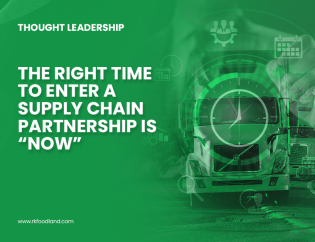In the fast-paced world of food service and FMCG, the story of success is often written by those who understand their past and can also foresee & adapt to the future. Over 80% of businesses have faced supply chain disruptions in the past year, leading to a 3-5% increase in expenses and a 7% decrease in sales. Consider the analogy of a seasoned chef in a bustling kitchen: while they must keep an eye on the dishes that are simmering – representing lag indicators of what has already been prepared – they also need to anticipate the next orders coming in – lead indicators of what is to come. This dual focus ensures the kitchen runs efficiently, meeting both current and upcoming demands. Similarly, in the business landscape, the strategic selection of supply chain KPIs, encompassing both lag and lead indicators, becomes crucial for sustained growth. This blog will explore how this blend of retrospective and predictive metrics forms the backbone of a responsive and robust food business, enabling it to thrive amidst market fluctuations and evolving consumer preferences.
Strategic Selection of KPIs in Food Business Ecosystem
The strategic selection of KPIs in the food business ecosystem is akin to a master chef carefully choosing ingredients for a signature dish. Just as the right ingredients are essential to the dish’s success, the right KPIs are critical for evaluating and enhancing a food business’s performance. For instance, in QSRs and cafes, KPIs should be tailored to emphasize aspects like service speed and food freshness, reflecting the fast-paced and quality-centric nature of these operations. Similarly, in the diverse landscape of FMCG, the focus shifts to managing product variety, efficient retail distribution, and effective shelf-life management. Here, KPIs related to distribution efficiency and stock rotation become paramount.
An integrated value chain analysis is the secret sauce to understanding the interconnectedness of various processes, much like how a chef appreciates the interplay of ingredients in a dish. This holistic approach to assessing KPIs across the entire value chain reaps numerous benefits. It enables a panoramic view of operations, from procurement of raw materials to the final delivery to customers, helping pinpoint efficiency gaps, identify opportunities for improvement, and ensure every link in the chain contributes optimally to the overall business health.
However, merely tracking KPIs is not enough, especially in the nuanced and dynamic food industry. Identifying the right KPIs that resonate with a business’s unique demands and align with its long-term strategic goals and operational objectives is crucial. This tailored approach ensures businesses are not just tracking numbers, but gaining meaningful insights that drive decision-making and foster sustainable growth.
Identifying Lead Lag Indicators & Focusing on the Right Mix
As a decision-maker in the food industry, you are likely contemplating the strategic selection of KPIs for your business. This is a prevalent issue, with numerous organizations still anchored to traditional approaches that may no longer align with modern market dynamics.
To find the right balance, it’s crucial to first understand what Lag and Lead indicators are. In any competitive business landscape, especially in the food industry, employing a mix of both lag and lead indicators can significantly enhance strategic decision-making.
Lag indicators, like ‘Stockout Rate,’ act as retrospective metrics. For example, fast-food chains use this indicator to assess instances where outlets ran out of key ingredients. This data, reflective of past performance, highlights inefficiencies in inventory management and demand forecasting. Similarly, ‘Customer Satisfaction Scores’ gathered post-dining offer insights into historical aspects of service quality and customer experience.
However, while informative, lag indicators alone are not sufficient for decision-making. They are akin to looking in the rear-view mirror; informative about the past but not indicative of the road ahead. This is where lead indicators come into play, offering predictive insights for proactive management. For instance, the fast-food chain tracks ‘Supplier Lead Time’ to anticipate and mitigate potential inventory shortages. Another vital lead indicator, ‘Order Accuracy Rate,’ predicts the effectiveness of fulfilling orders accurately, allowing the chain to implement real-time corrective actions.
By integrating both lag and lead indicators, a food business achieves a dynamic and holistic performance view. This approach not only provides a comprehensive assessment of the current situation but also facilitates a continuous feedback loop, enabling the value chain to refine strategies and make informed, forward-looking decisions. Thus, the right mix of KPIs, tailored to the unique dynamics of the food business, becomes crucial for sustainable growth and competitive advantage.
Recognizing this, it becomes evident that businesses pioneering new methods or concepts tend to lead the industry. Particularly in the food sector, the importance of qualitative performance aspects cannot be overstated. These elements, frequently unnoticed or undervalued, are key differentiators, elevating a business from merely functional to exceptional. Transitioning from a cost-first to a value-based approach, it’s these nuanced details – the quality of customer interaction, the ethical sourcing of ingredients, or the sustainability of operations – that empower a food business to stand out. This shift towards emphasizing service excellence and value creation is what ultimately defines success in the dynamic world of food business.
Are you ready to elevate your food business with the right KPI mix? Connect with us to discover how a balanced approach to KPIs can transform your business strategy, enhance service excellence, and drive sustainable growth.
Gain a strategic edge in the food sector by pinpointing the right KPIs for your business’s success.
Related Content | Foodland’s Resources
Top Supply Chain Metrics & KPIs To Improve Supply Chain Performance
How to Measure and Improve Your Supply Chain Metrics
How to Spot Leading and Lagging Key-Performance Indicators
